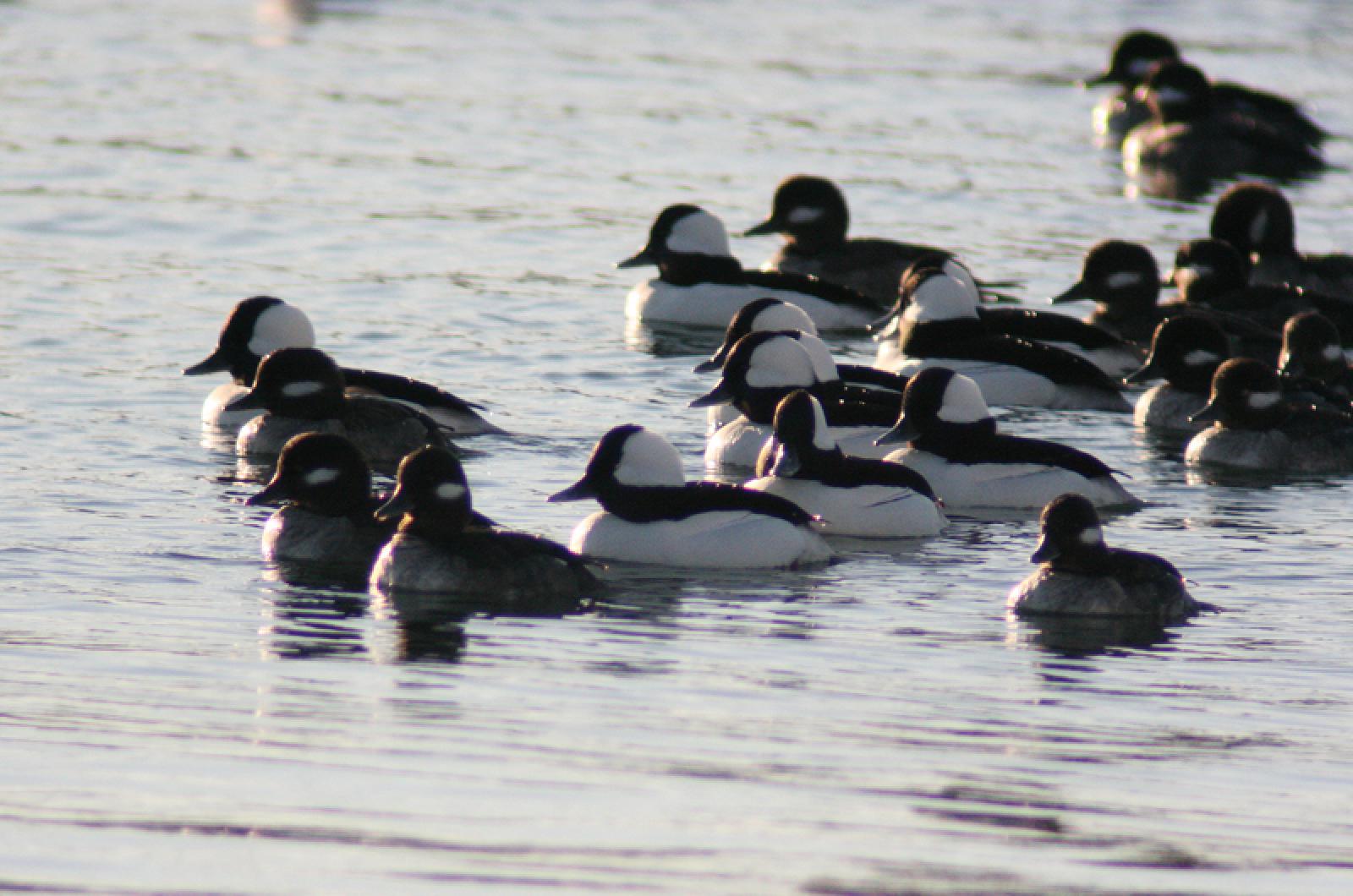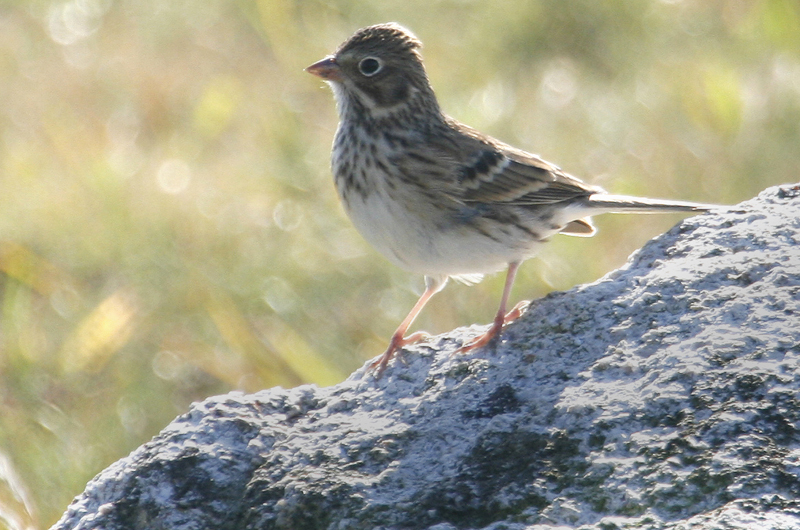Waterfowl will be abundant on our ponds until April. This abundance is due to our normally milder weather and the prevalence of salt ponds that do not freeze as easily as fresh water does. Some species of diving ducks are here already, and more will be coming in the next month or so.
The diminutive bufflehead — the males are a striking black and white — are already widespread on many of our coastal ponds. There were at least 200 of them in Sengekontacket Pond on Nov. 12, mostly at the northern and southern ends of the pond. Flocks of them can be observed as they dive for food, although some of the time a flock you know is there is not visible because the whole flock will almost simultaneously dive underwater in their search for food. They can stay underwater for a minute or more, although most dives are much shorter.
Easily confused with the small bufflehead is the hooded merganser as the male mergansers also have a large white patch on the sides of their head. The merganser’s serrated beak distinguishes it, as do the male’s brown flanks. There are lots of them around and they seem to be more common on our smaller ponds.
Red-breasted mergansers have also become abundant on our ponds although the large flocks that are often in the ocean have not been reported yet. One may be tempted to think that most of the red mergansers we see now are female, but a closer inspection of the flock will likely show that some of the “females” are now molting into the more brightly colored male breeding plumage. Apparently they molt out of their drab summer plumage later than other waterfowl species.
A few common goldeneye have been reported, and so far there have been no reports of any greater scaup. Both species will soon be more abundant, but they tend to stay further north until cooler temperatures and freezing water forces them southward.
Sea ducks like common eiders and the three scoter species will also become more common in the sound and the ocean.
Bird Sightings
Two new species for the season have arrived. Ken Magnuson observed the first horned grebe of the season, on Nov. 8 at South Beach. And on Nov. 12 I observed a flock of about 30 Bonaparte’s gulls as they flew back and forth, repeatedly diving into Nantucket Sound a short distance from the Little Bridge on State Beach.
Dana Bangs spotted a flock of 30 snow buntings in the parking lot at the end of Herring Creek Road in Edgartown on Nov. 12. As he was watching, a Cooper’s hawk came by and the snow buntings left. No surprise there! Jeff Bernier has also seen this flock.
Lanny McDowell visited Thimble Farm on Nov. 12 and found eastern bluebirds, palm warblers and pine warblers, savannah sparrows and American goldfinches. They were concentrated in the community garden plots and they can be viewed from the road — they may well even perch on the fencing, providing clear unobstructed views.
The highlights of a morning’s birding on Nov. 11 for Ken Magnuson and Kelly Spencer included an orange-crowned warbler at the Gay Head Cliffs and a vesper sparrow at the Farm Institute. The yellow-breasted chat reported last week at the Edgartown Golf Club continues to be present as of Nov. 11.
John Nelson observed six American pipits in the fields of the Farm Institute on Nov. 13.
Sharon Simonin visited Brush Pond between the hospital and the lobster hatchery on Nov. 10 and found both hooded and red-breasted mergansers, five common goldeneye, four bufflehead and three great blue herons.
Screech owls are still in the news as four of them have been observed in broad daylight. Mary-Ruth Long Flores observed one on Scotchman’s Lane in West Tisbury on Nov. 9, while Margaret Curtin saw one at Brightwood Park in Vineyard Haven and Nancy Rogers spotted one at her West Tisbury home. The next day Mary Shea spotted one in Edgartown perched in the family’s bamboo patch. A general consensus is that these owls are not calling as much now that the days are so short.
I also observed a flock of five greater yellowlegs tucked into a salt marsh on Sarson’s Island on Nov. 12. How much longer will they stay? It is getting late in the year for this species to still be here.
Rarities and other migrants are passing through; please look for them and report your sightings to birds@mvgazette.com.
Robert Culbert leads Guided Birding Tours and is an ecological consultant living in Vineyard Haven.








Comments
Comment policy »